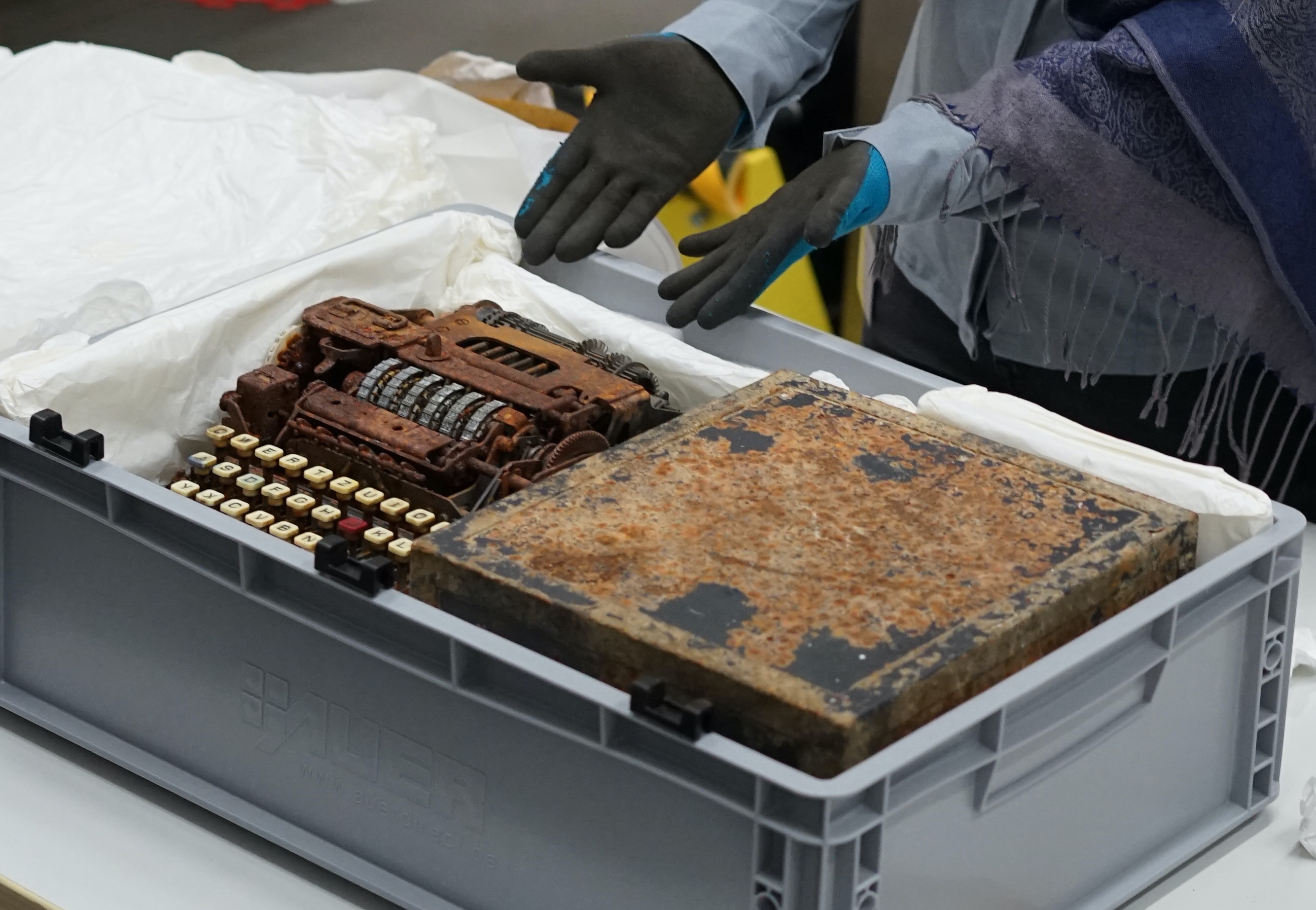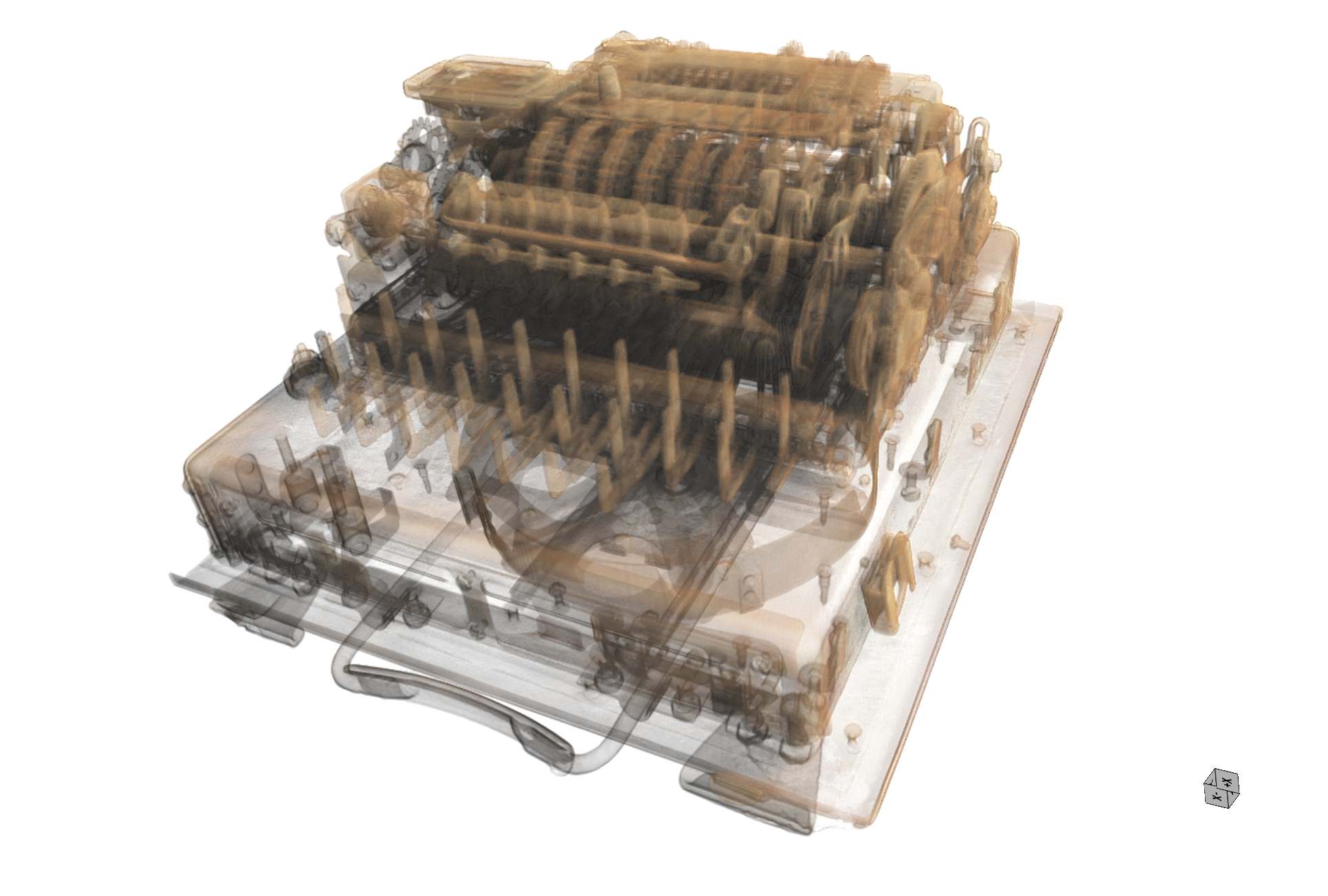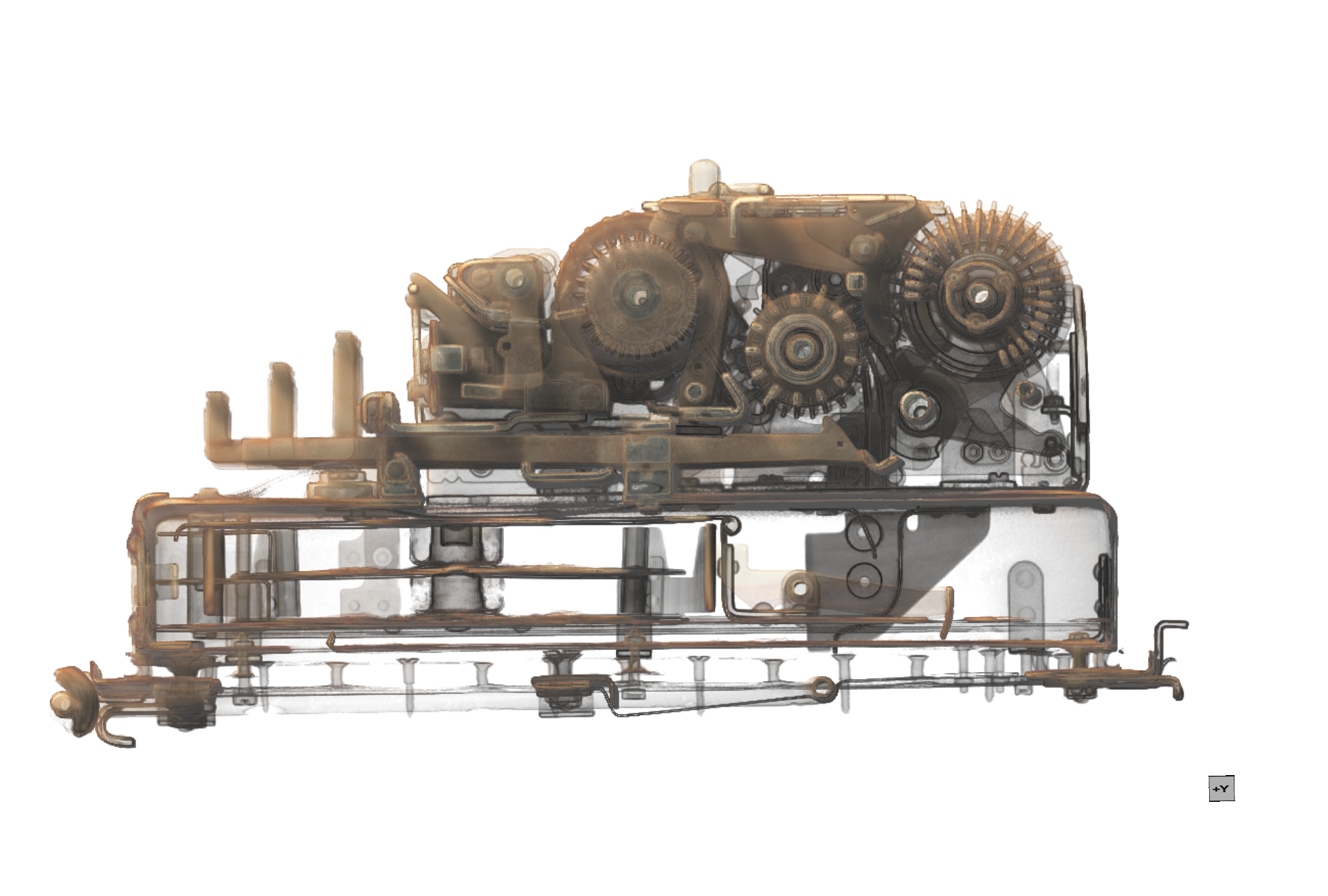
Date |
1943 |
Origin |
Manufacturer:Wanderer-Werke AG (Integrated Authority File (GND)), Chemnitz |
Inventory no. |
|
Client |
|
Technology |
3D-CT |
System |
High-energy CT |
Technical challenge |
Detecting different materials with different absorption characteristics, from paper to iron |
Task |
Investigating the condition and internal structure of the cipher mechanism |

